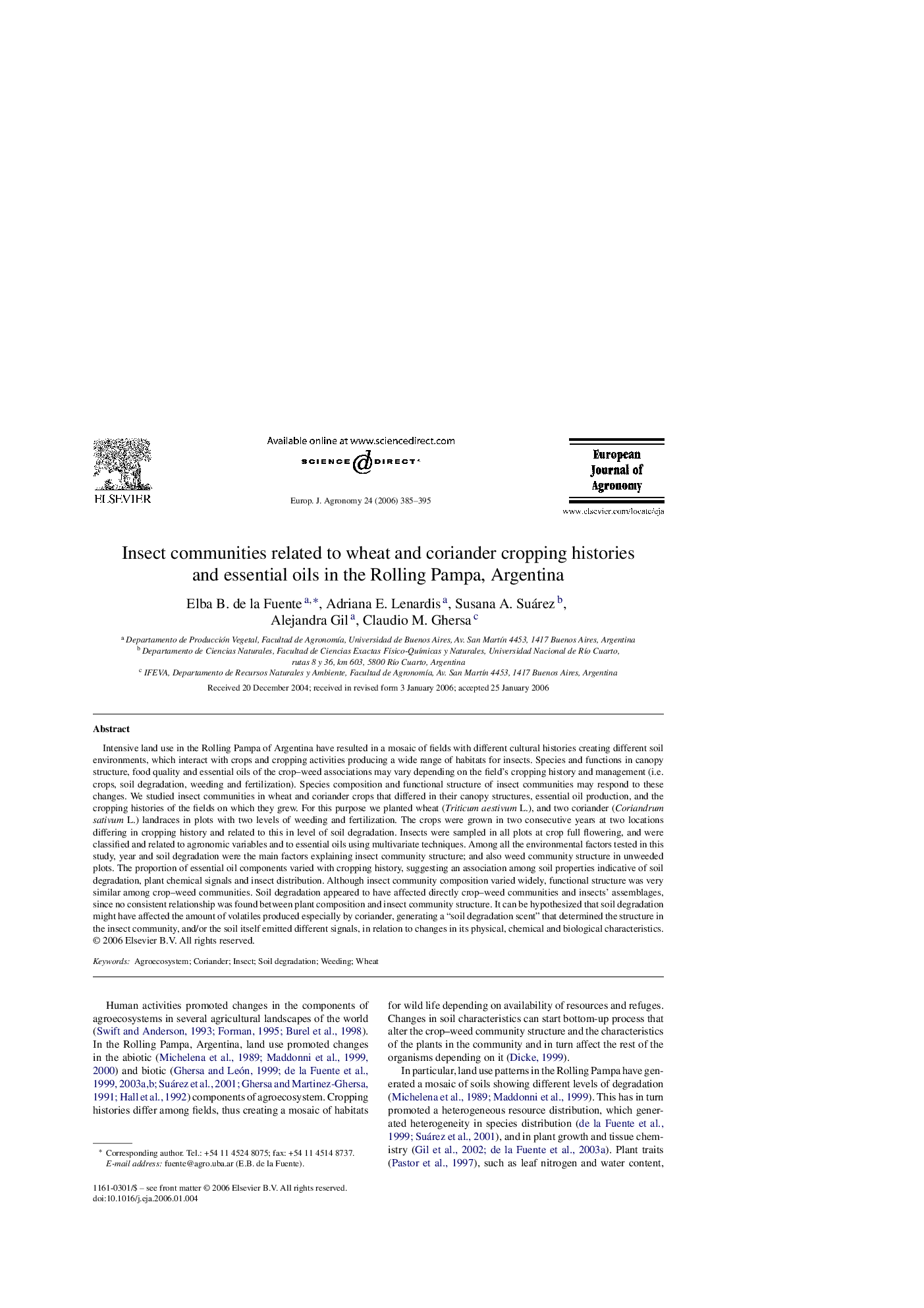| Article ID | Journal | Published Year | Pages | File Type |
|---|---|---|---|---|
| 4509765 | European Journal of Agronomy | 2006 | 11 Pages |
Intensive land use in the Rolling Pampa of Argentina have resulted in a mosaic of fields with different cultural histories creating different soil environments, which interact with crops and cropping activities producing a wide range of habitats for insects. Species and functions in canopy structure, food quality and essential oils of the crop–weed associations may vary depending on the field's cropping history and management (i.e. crops, soil degradation, weeding and fertilization). Species composition and functional structure of insect communities may respond to these changes. We studied insect communities in wheat and coriander crops that differed in their canopy structures, essential oil production, and the cropping histories of the fields on which they grew. For this purpose we planted wheat (Triticum aestivum L.), and two coriander (Coriandrum sativum L.) landraces in plots with two levels of weeding and fertilization. The crops were grown in two consecutive years at two locations differing in cropping history and related to this in level of soil degradation. Insects were sampled in all plots at crop full flowering, and were classified and related to agronomic variables and to essential oils using multivariate techniques. Among all the environmental factors tested in this study, year and soil degradation were the main factors explaining insect community structure; and also weed community structure in unweeded plots. The proportion of essential oil components varied with cropping history, suggesting an association among soil properties indicative of soil degradation, plant chemical signals and insect distribution. Although insect community composition varied widely, functional structure was very similar among crop–weed communities. Soil degradation appeared to have affected directly crop–weed communities and insects’ assemblages, since no consistent relationship was found between plant composition and insect community structure. It can be hypothesized that soil degradation might have affected the amount of volatiles produced especially by coriander, generating a “soil degradation scent” that determined the structure in the insect community, and/or the soil itself emitted different signals, in relation to changes in its physical, chemical and biological characteristics.
